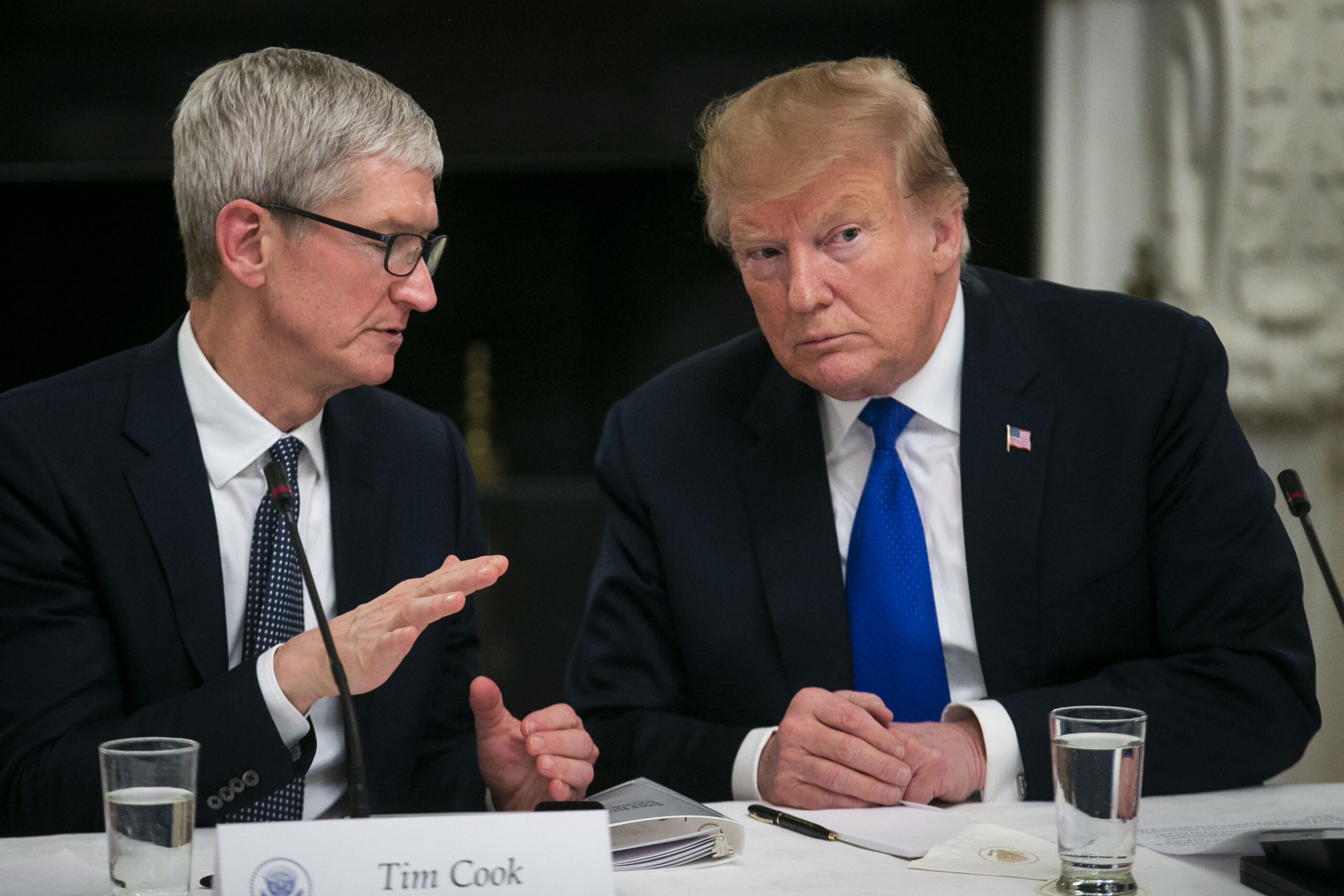
President Donald Trump announced Friday on social media that Apple will face a tariff of at least 25% on iPhones manufactured outside the United States.
“I have long ago informed Tim Cook of Apple that I expect their iPhone’s that will be sold in the United States of America will be manufactured and built in the United States, not India, or anyplace else. If that is not the case, a Tariff of at least 25% must be paid by Apple to the U.S.,” Trump said on Truth Social.
Following the announcement, Apple’s shares dropped 3% on Friday.
Manufacturing shifts and costs
Apple’s flagship iPhones are primarily assembled in China, but the company has been moving some production to India, a country with a friendlier trade relationship with the U.S.
Some analysts estimate that shifting iPhone production to the U.S. would increase the retail price by 25% or more. Wedbush’s Dan Ives projected a U.S.-made iPhone could cost around $3,500, compared to the current $1,000 price for the iPhone 16 Pro.
Broader tariff plans
Trump indicated the tariff would apply to other smartphone makers like Samsung, with enforcement expected to begin at the end of June.
“I had an understanding with Tim that he wouldn’t be doing this. He said he’s going to India to build plants. I said that’s okay to go to India, but you’re not going to sell into here without tariffs. And that’s the way it is,” Trump told reporters Friday.
This follows increasing pressure from Trump on Apple and CEO Tim Cook to boost domestic manufacturing. The two met recently at the White House.
Government perspective and Apple’s investments
Treasury Secretary Scott Bessent told Fox News that Apple’s situation fits into the administration’s broader effort to revive “precision manufacturing” in the U.S.
“A large part of Apple’s components are in semiconductors. So we would like to have Apple help us make the semiconductor supply chain more secure,” Bessent said.
Cook donated $1 million to Trump’s inauguration and attended the event. Apple has committed $500 billion to U.S. development, including AI server production in Houston.
Apple did not comment for this report.
During its May 1 earnings call, Apple said it expects $900 million in additional tariff costs this quarter. Cook called the tariff outlook beyond June “very difficult to predict.”
Foxconn, Apple’s major iPhone assembler, is investing $1.5 billion to expand its India facilities.
Trade tensions heat up
Trump has criticized other U.S. companies, including Walmart, during his trade war. Targeting a specific consumer product like the iPhone with tariffs is a new tactic.
He also called for a 50% tariff on European Union products, signaling rising trade tensions after a recent easing of levies, including those on China.
During Trump’s first term, a proposed 15% tariff on Chinese imports threatened Apple, but the final deal excluded core Apple products.
Meanwhile, Apple faces soft demand in China, prompting increased iPhone trade-in incentives there.
Author’s Opinion
While tariffs are often promoted as a way to protect domestic jobs and industries, imposing steep tariffs on products like iPhones risks backfiring. The reality is that modern supply chains are global and complex, and shifting production suddenly can lead to higher costs for consumers without guaranteeing the intended economic benefits. Instead of focusing solely on tariffs, policymakers should foster innovation, workforce development, and supply chain resilience in ways that do not sharply increase prices or disrupt industries already integrated worldwide.
Featured image credit: Moneyweb
For more stories like it, click the +Follow button at the top of this page to follow us.
